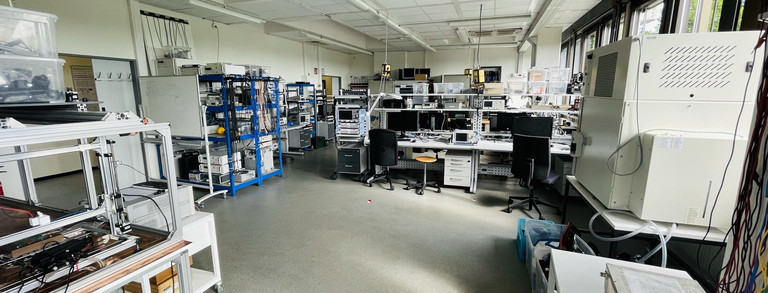Faults in 48 V vehicle electrical systems
The usual nominal voltage in passenger cars is 12 V. Since this can only be used to supply high-performance consumers with great effort and thus important functions for CO2 reduction cannot be implemented, many components have been developed in recent years for 48 V as an additional voltage level. This voltage does not yet require any elaborate protective measures for electrical personal safety, but it does make it possible to quadruple the transmission power with almost the same cabling effort in the vehicle electrical system. This can be used to implement simple drive functions in mild hybrid vehicles, e.g. sailing (electric holding of speed without acceleration) or recuperation (brake energy recovery). This can significantly improve the CO2 balance of a motor vehicle.
In addition to CO2 reduction, the 48 V level can also be used for other high-current/high-power applications. These include, for example, roll stabilization, the e-turbo or the windshield heating. High-performance consumers that are often still operated mechanically, such as air-conditioning pumps, can also be supplied more easily with 48 V. Thus, the 48 V on-board network will grow into a second complex network alongside the 12 V on-board network.
In addition to the above-mentioned advantages of a 48 V on-board network, however, there is a risk that arcing can occur if a fault occurs in the wiring (e.g. short circuit, line break, loose contacts, ...). Arcs are discharge phenomena that allow current to be transported over a short distance of air. They consist of extremely hot plasma, which can reach temperatures of up to 20,000 K. This enormous heat can set surrounding components, such as cable insulation, on fire.
In high-voltage electrical systems for electric vehicles, arc faults can also occur in principle. However, these are very well monitored and protected due to the high requirements for contact protection, so it is unlikely that arc faults can cause major damage here. The 48 V on-board network, however, represents a potentially highly interconnected on-board network, without any special monitoring measures being provided here.
The on-board systems research area is concerned with the study of arcing in 48 V automotive power systems. Arc models were created in order to be able to estimate potential hazards in various on-board power system configurations very accurately by means of simulations. Furthermore, various detection methods were analyzed and newly developed. Extensive laboratory facilities allow both the testing of wiring systems under extreme conditions and the precise parameterization of the simulation models.
Arcs can be classified by their relative position to the source. Serial arcs occur in series to the source and parallel arcs occur in parallel to the source, similar to short circuits.

